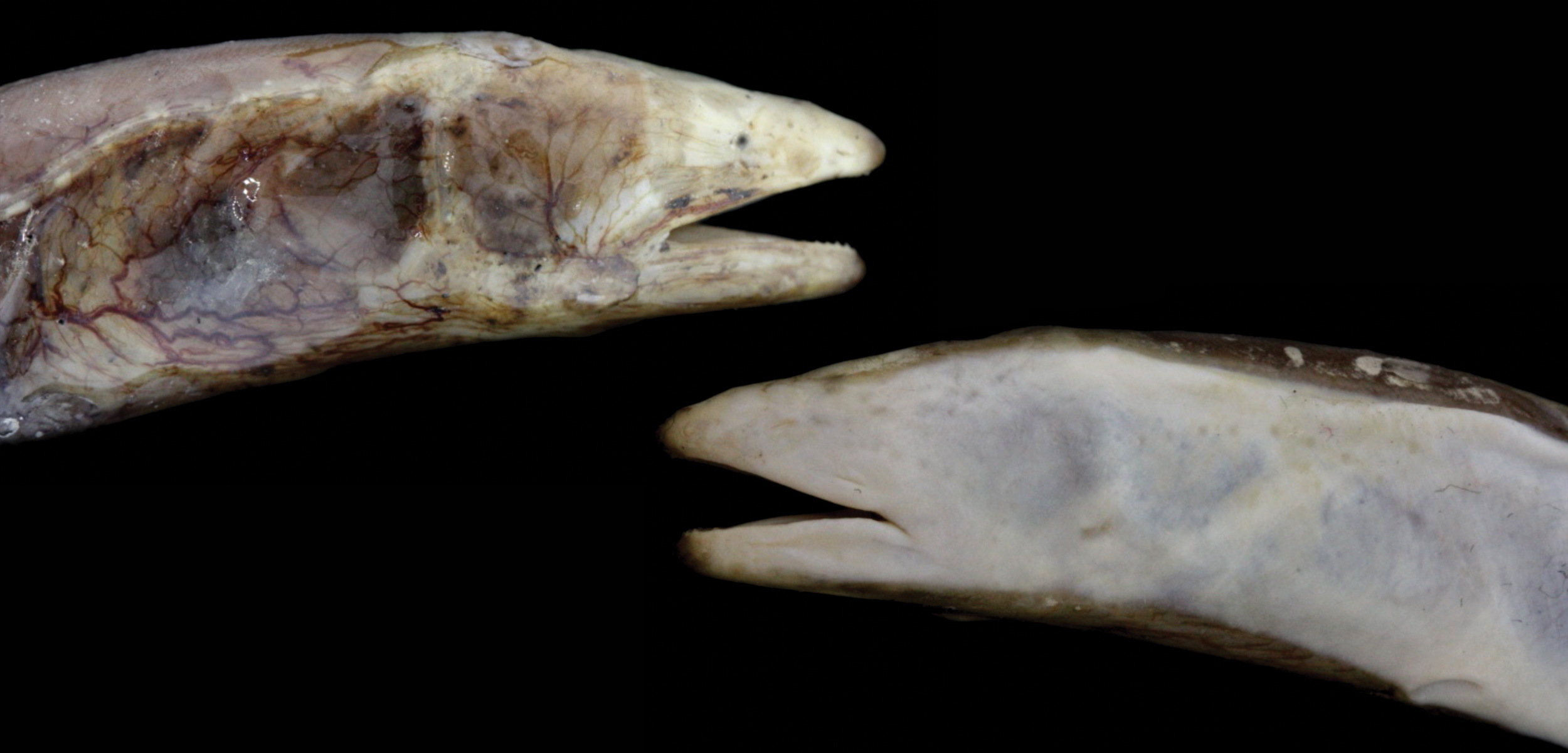Twisted Fishter
Mud eels do an evolutionary about face.
Article body copy
Making decisions is a pain: paper or plastic; window or aisle; chocolate or vanilla; wonky-faced bottom feeder or glorified water snake? To many of life’s questions the best answer is, apparently: why not both?
That seems to be the decision reached by a pair of uniquely odd mud eels. In a new paper, scientists describe two individual eels that can’t seem to decide on an evolutionary path. The eels are long and slithery like the rest of their muck-burrowing brethren, but they have something else: features vaguely reminiscent of the skewed, asymmetrical, perpetually pancaked flatfish.
The indecisive eels were caught by a trawl survey off West Africa’s Guinea coast, and then donated to New York’s American Museum of Natural History, where their peculiarity was discovered.
“The eels came along with a large shipment of other nearshore fishes, and did not stand out at first,” says Christopher Martinez, the aquatic biologist who made the find. “Once I took a closer look, however, it was immediately clear that these eels had some unique and extraordinary features.”
As a group, not much is known about mud eels, as the animals are seldom encountered and rarely studied. What is known is that they appear to have adaptations for plunging face first into seafloor sludge. They have tiny eyes, no pectoral fins, and a solid, conical skull.
But the Guinean specimens also have a strange external asymmetry. The two eels have almost no color on one side of their bodies. One of the eels is even more unusual, as the eye on its pale side is blind and completely covered by flesh. When Martinez and his colleagues took x-rays and CT scans of this eel’s skeleton, they found that its jaw was tilted on that side, forming a flat surface.
Despite these extreme eccentricities, the eels are otherwise identifiable as Pythonichthys macrurus—the longtailed shortfaced eel. Martinez can’t say for sure if these curious creatures represent a new species, or are just remarkable variants.
“This is an exciting finding and adds to the perplexing nature of eels,” says Rita Mehta, a biologist at the University of California, Santa Cruz, who studies eel morphology and evolution. “Asymmetry in a species that is otherwise known as a head-first burrower is puzzling.”
To Martinez’s knowledge, this is the first non-flatfish species to have a completely blind, colorless side.
It is certainly possible, says Martinez, that these flounder-like modifications represent a radical evolutionary and ecological departure from the typical mud eel way of life, with these fish hiding on the ocean bottom in a markedly un-eel-like manner. If this is the case, the animals would be a curious evolutionary experiment—an example of convergent evolution, where two unrelated species find similar evolutionary solutions.
However, Martinez cautions that without more direct evidence of how the asymmetrical eels are spending their time, it’s hard to say definitively what their weird, twisted features are for.
“While we know the reason for asymmetry in flatfishes, our prediction of a comparable lifestyle in the mud eel specimens is provisional until we can gather more detailed ecological information,” he says.
Whatever has lured these mud eels to take up the asymmetrical life, it is, at a minimum, responsible for their new recognition as an ichthyological marvel. Perhaps you could say that flat-tery will get you somewhere.

